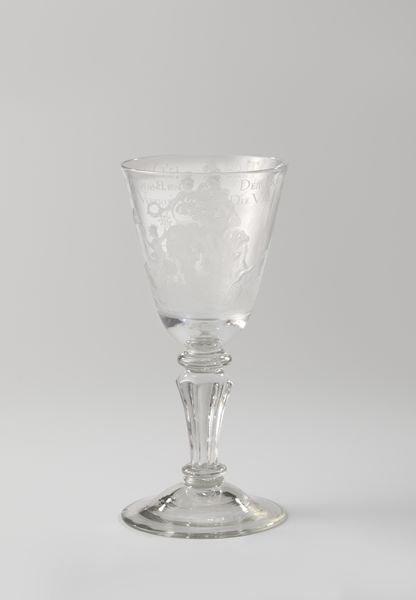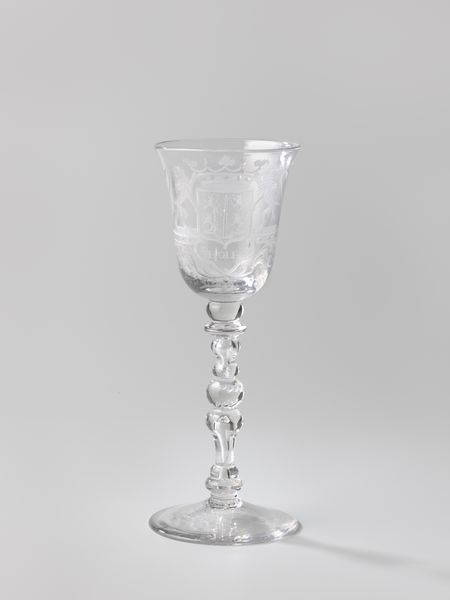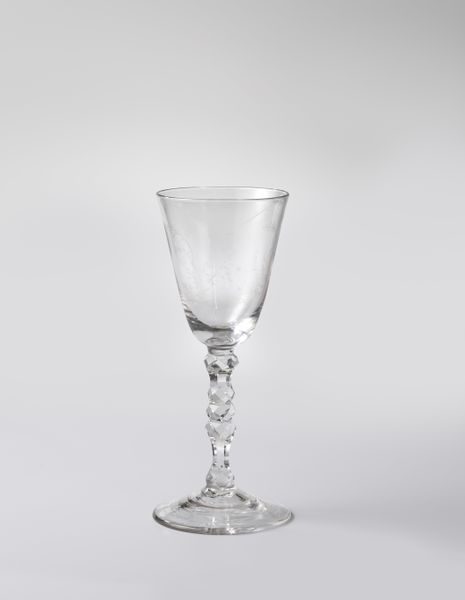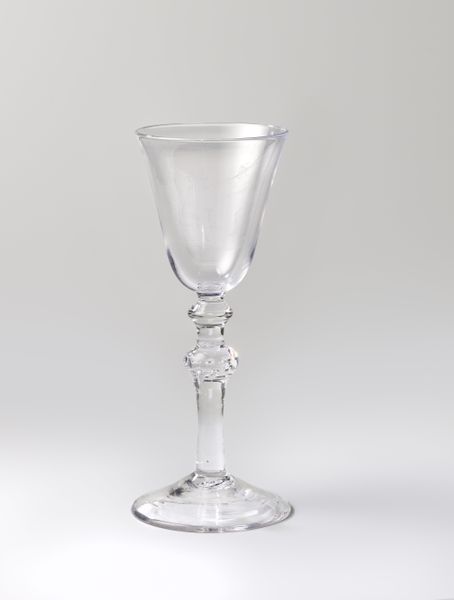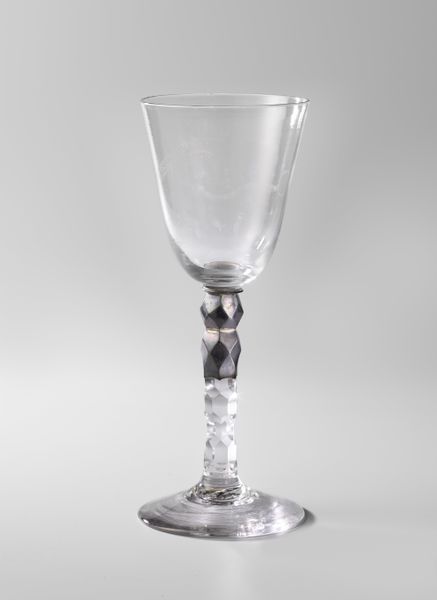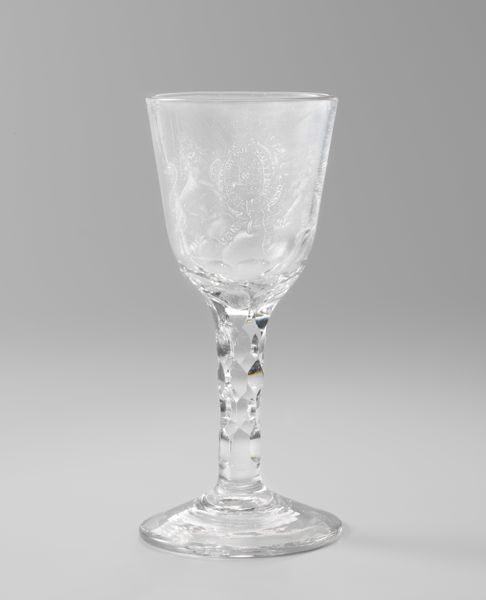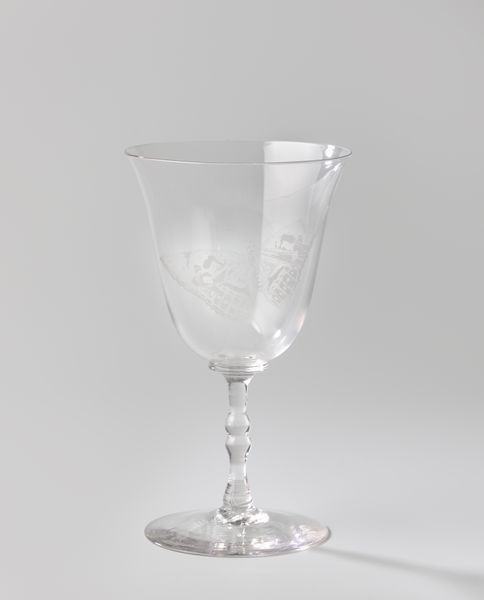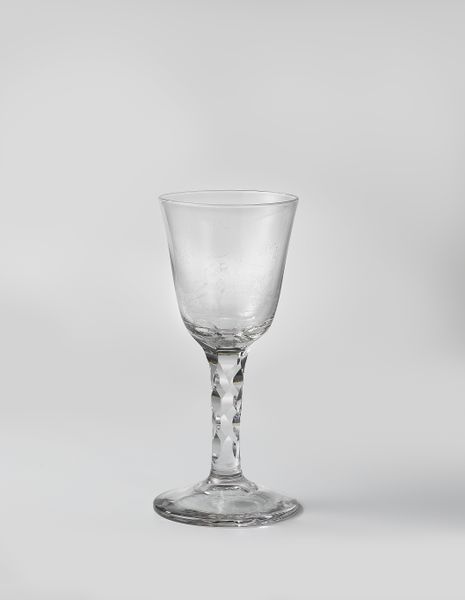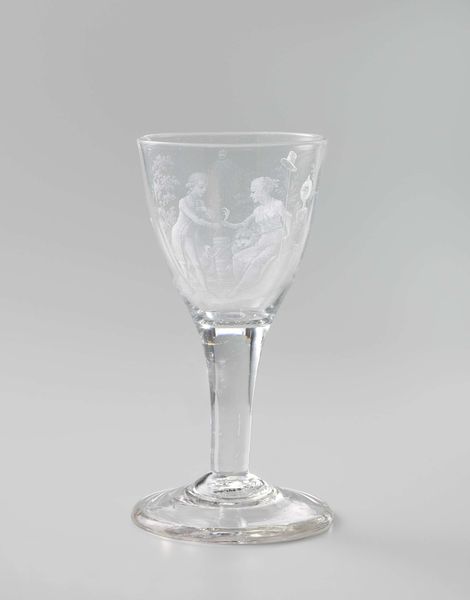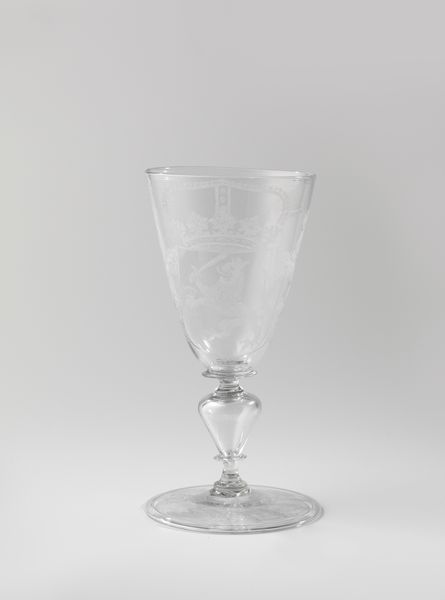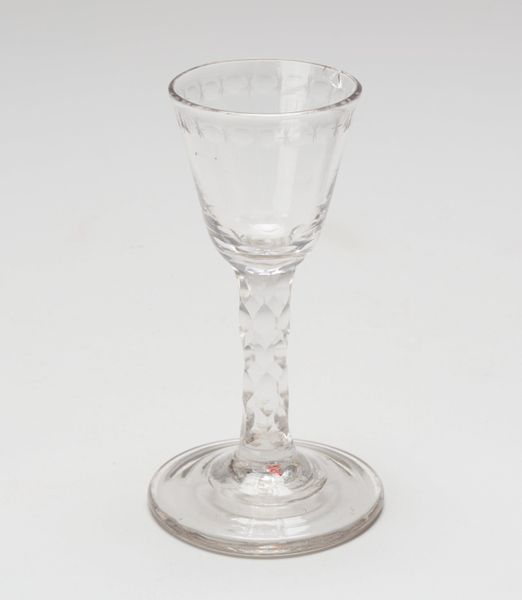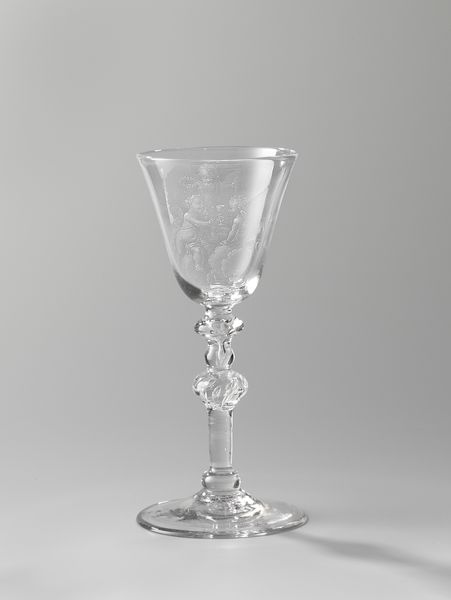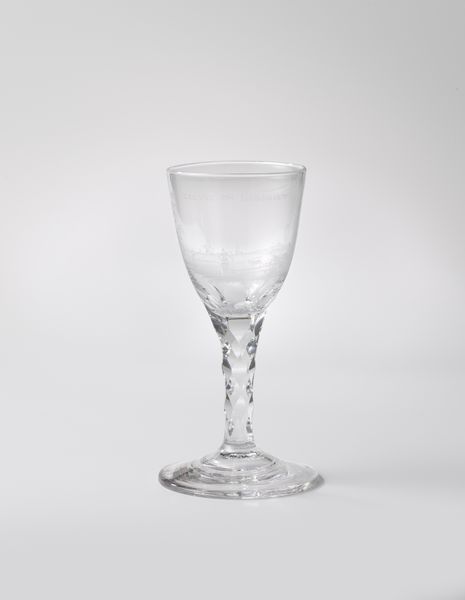
glass
#
glass
#
decorative-art
Dimensions: height 23.1 cm, diameter 11.7 cm
Copyright: Rijks Museum: Open Domain
Curator: At first glance, it looks like a relatively simple wine glass, yet something about the landscape etching gives it unexpected depth. Editor: This is "Bokaal met een landschap met een ezel, twee bokken en een geit," made of glass, pre-1849. Notice the pastoral scene delicately engraved, featuring animals in a landscape, quite a contrast to the delicate nature of the glass itself. Curator: Definitely, I’m wondering, with all of these different glassworks at the time, how this piece speaks to a particular social sphere? Was it part of a larger set, destined for aristocratic dinners, signaling wealth and refinement through both the material and the craftsmanship? Editor: Possibly, but let’s consider other angles. Looking at the portrayal of animals in this delicate scene, what societal messages about rural life, ownership, or labor are conveyed? Were these scenes nostalgic visions romanticizing the countryside while obscuring the realities of the working class? It begs us to consider how it reflects the complicated socio-economic landscapes of the time. Curator: You're right. I get the impression that the piece had to be crafted slowly. To start with the glass making process: did the artisans employ novel techniques of the time, blowing glass thinly enough to receive detailed etching, or are these standard practices dressed up by more complex etching? That, and it’s always intriguing when "anonymous" artisans contribute works; who are the anonymous people creating works like these and why are their contributions not part of canonical art histories? Editor: Indeed. It makes you consider issues surrounding the canon: the identities and stories that are privileged in these glass-blown objects versus those that are omitted. The narratives promoted—of leisurely countryside strolls, which would have resonated more with some audiences than others—reflect and influence social attitudes of that time, which, even now, deserve examination. Curator: Well, considering how it's made with skill, and it hints at stories larger than its function, it elevates how we might perceive this functional piece today. Editor: Ultimately, viewing this goblet through the lens of social history illuminates overlooked perspectives, providing insight into past narratives while sparking relevant dialogue for our own time.
Comments
No comments
Be the first to comment and join the conversation on the ultimate creative platform.
